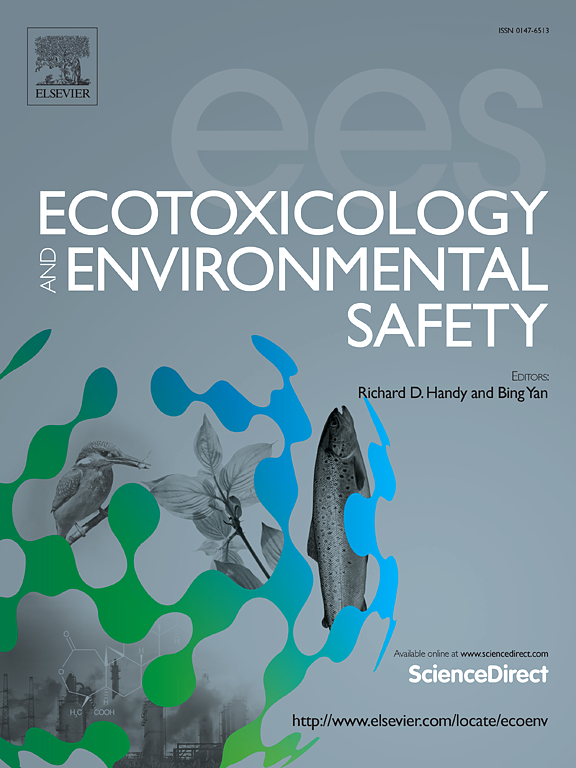通过网络毒理学和分子对接策略有效预测聚乳酸引发的炎性骨溶解症
IF 6.2
2区 环境科学与生态学
Q1 ENVIRONMENTAL SCIENCES
引用次数: 0
摘要
本文章由计算机程序翻译,如有差异,请以英文原文为准。
The efficient prediction of inflammatory osteolysis caused by polylactic acid through network toxicology and molecular docking strategy
Polylactic acid (PLA), as a bioplastic, is extensively utilized in bone tissue engineering for its biocompatibility, adaptability and affordability. However, the toxicological research of PLA is still limited. The hydrolysis products of PLA induced inflammatory response which caused inflammatory osteolysis mediated by oxidative damage through the recruitment of macrophages and the accumulation of foreign body multinucleated giant cells, ultimately leading to the failure of bone tissue regeneration. The lack of effective treatments highlights the importance of finding new therapies. This study systematically investigated the potential molecular mechanisms of PLA-induced inflammatory osteolysis by employing network toxicology and molecular docking techniques. We first conducted a network toxicology-based assessment according to the molecular structure of PLA. The result from integrating and screening targets from multiple databases identified 126 potential targets associated with PLA-induced inflammatory osteolysis, and then an interaction network diagram of the targets was constructed. Gene ontology (GO)/KEGG enrichment analysis clarified that PLA may cause inflammatory osteolysis via metabolic pathways and pathways in cancer, as well as lipid and atherosclerosis. Further analysis by STRING and Cytoscape software screened 25 core targets including HSP90AA1, AKT1, SRC, STAT1 and FYN. We found that the enriched highly correlated pathways covered 18 of the 25 core targets, supporting the scientific hypothesis that PLA induces inflammatory osteolysis. Moreover, the results of molecular docking confirmed that PLA displayed a strong binding ability with the core targets and formed stable binding. Taken together, this study not only revealed the potential biological mechanism of PLA-induced inflammatory osteolysis, but also provided new evidence for the future prevention and treatment of PLA-induced inflammation.
求助全文
通过发布文献求助,成功后即可免费获取论文全文。
去求助
来源期刊
CiteScore
12.10
自引率
5.90%
发文量
1234
审稿时长
88 days
期刊介绍:
Ecotoxicology and Environmental Safety is a multi-disciplinary journal that focuses on understanding the exposure and effects of environmental contamination on organisms including human health. The scope of the journal covers three main themes. The topics within these themes, indicated below, include (but are not limited to) the following: Ecotoxicology、Environmental Chemistry、Environmental Safety etc.

 求助内容:
求助内容: 应助结果提醒方式:
应助结果提醒方式:


